We use cookies to help you navigate efficiently and perform certain functions. You will find detailed information about all cookies under each consent category below.
The cookies that are categorized as "Necessary" are stored on your browser as they are essential for enabling the basic functionalities of the site. ...
Necessary cookies are required to enable the basic features of this site, such as providing secure log-in or adjusting your consent preferences. These cookies do not store any personally identifiable data.
Functional cookies help perform certain functionalities like sharing the content of the website on social media platforms, collecting feedback, and other third-party features.
Analytical cookies are used to understand how visitors interact with the website. These cookies help provide information on metrics such as the number of visitors, bounce rate, traffic source, etc.
Performance cookies are used to understand and analyze the key performance indexes of the website which helps in delivering a better user experience for the visitors.
Advertisement cookies are used to provide visitors with customized advertisements based on the pages you visited previously and to analyze the effectiveness of the ad campaigns.
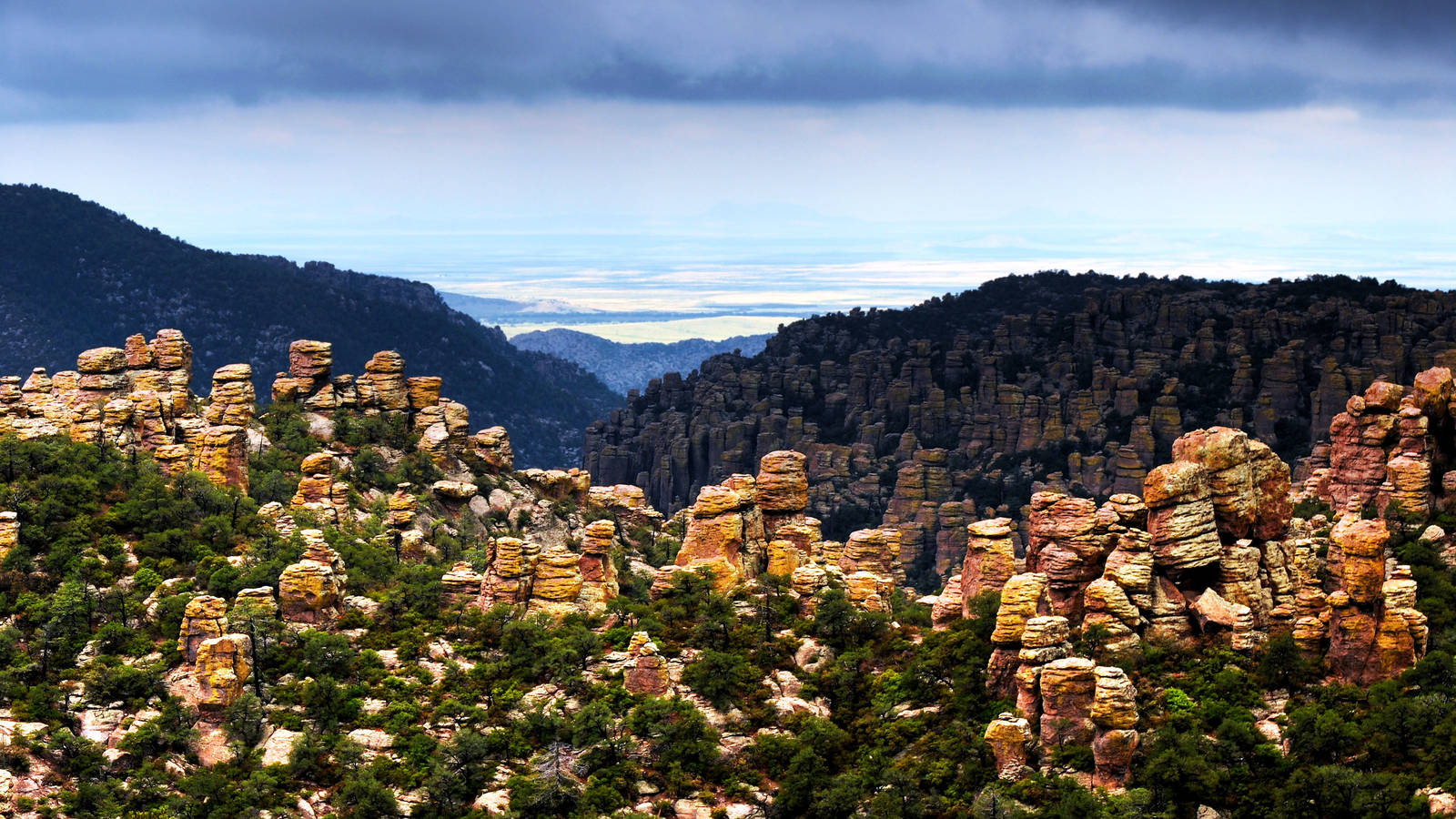
Here are several that you may not have heard of but are certainly worth the visit!
There are 24 sites—encompassing national monuments like Chiricahua and Casa Grande Ruins, national memorials, national historic sites, and of course, three national parks: Saguaro, Petrified Forest, and Grand Canyon.
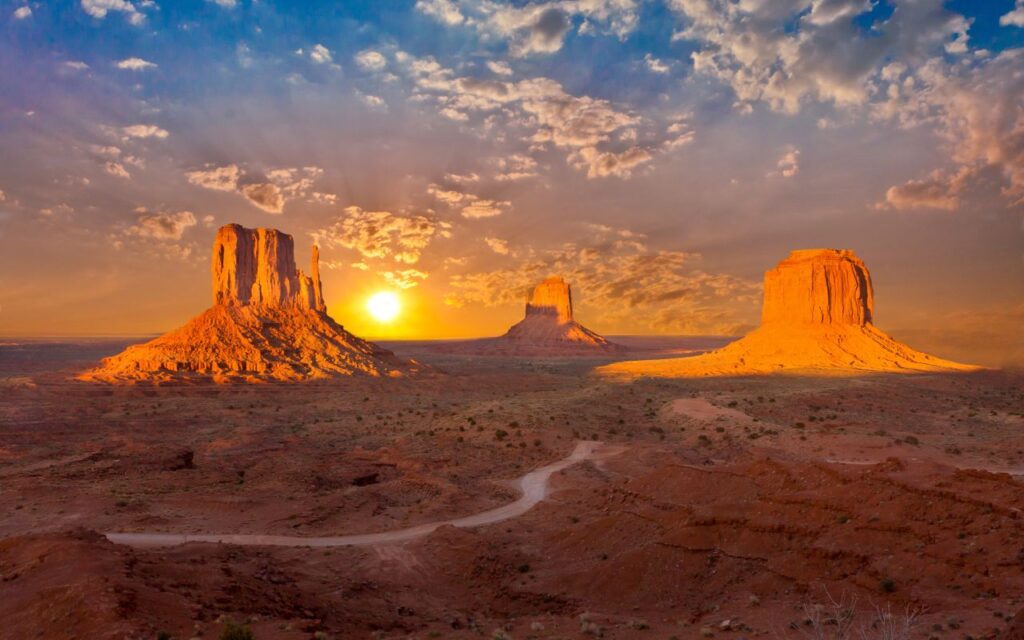
Monument Valley National Park
Monument Valley, meaning valley of the rocks, is a region of the Colorado Plateau characterized by a cluster of sandstone buttes, the largest reaching 1,000 ft (300 m) above the valley floor.The most famous butte formations are located in northeastern Arizona along the Utah–Arizona state line. The valley is considered sacred by the Navajo Nation, the Native American people within whose reservation it lies.
It is well worth a trip to see it, the view changes as the light changes so it’s always a new sight to see.
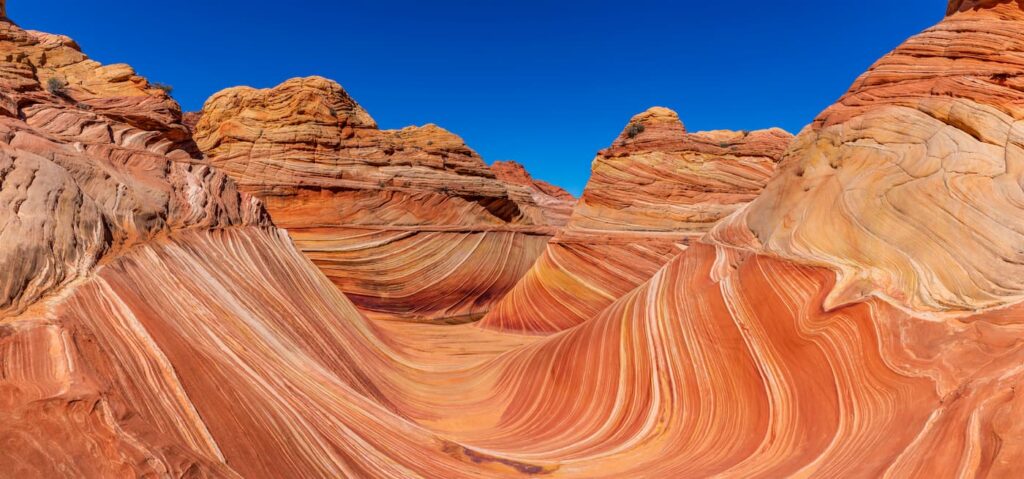
Vermilion Cliffs National Park
This remote and unspoiled, 294,000-acre monument is a geologic treasure, containing Paria Plateau, Vermilion Cliffs, Coyote Buttes and Paria Canyon.
Enjoy scenic views of towering cliffs and deep canyons. The colorful swirls of cross-bedded sandstone in Coyote Buttes are an international hiking destination. There are also opportunities to view wildlife, including California condors. There are two developed campgrounds just outside the monument: Stateline and White House. Dispersed camping is allowed outside the wilderness area in previously disturbed areas.
Access to the Wave is limited to preserve it and a permit is required.
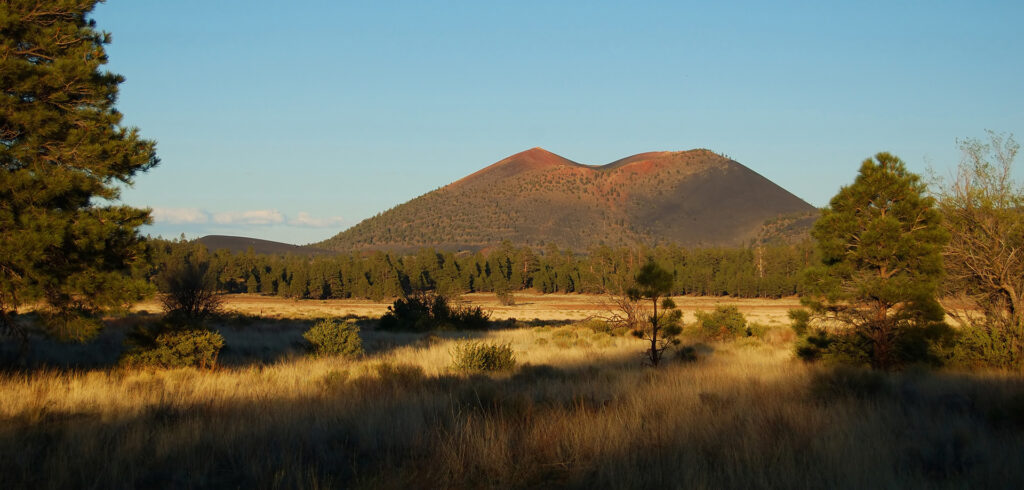
Sunset Crater National Park
Sunset Crater Volcano National Monument is a U.S. national monument created to protect Sunset Crater, a cinder cone within the San Francisco Volcanic Field. The monument is managed by the National Park Service in conjunction with nearby Wupatki National Monument. In 1928, a Hollywood film company, Famous Players–Lasky Corporation, planned to detonate large quantities of explosives on the side of Sunset Crater in order to create an avalanche for Zane Grey’s motion picture Avalanche. Public outcry over this plan led in part to the proclamation of Sunset Crater Volcano National Monument by President Herbert Hoover in 1930. It is a wonderful place for camping, either in the camp ground or dispersed camping in the park.

Petrified Forest National Park
Nature, geology, archaeology, paleontology and even architecture meet at this high-desert park. Petrified Forest is best known for its Triassic fossils. It’s like having two parks in one, an ecosystem over 200 million years old with plants and animals now represented in the surreal landscape of the Painted Desert. There is also a living park with its own denizens adapted to a demanding environment. Be sure to check out the dinosaur footprints preserved in the stone!
Stretching for miles on both sides of Interstate 40 and located near the town of Holbrook in Northern Arizona, Petrified Forest National Park is a high-desert geologic treasure chest. You’ll see loads of petrified wood, not to mention eye-popping views of The Painted Desert, which sweeps through the park. Two visitor centers — the Painted Desert Visitor Center on the north and the Rainbow Forest Museum to the south — offer exhibits, books and gifts, limited food service and restrooms. Both sides of the park are connected by the 28-mile-long Main Park Road, which winds past viewpoints, trailheads and other attractions. It’s a worthwhile visit!
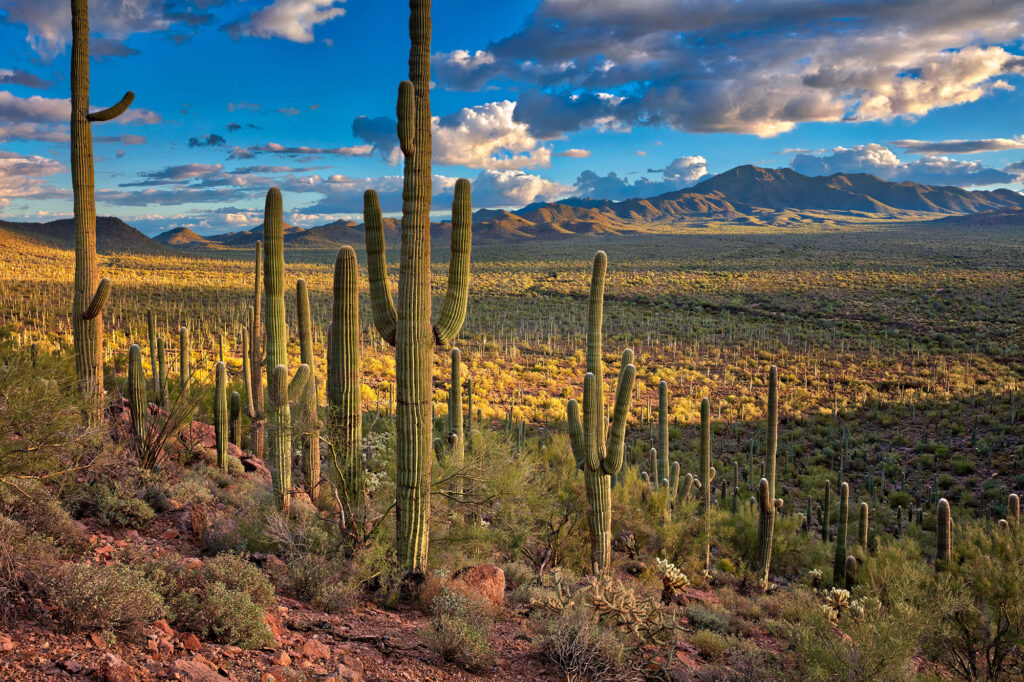
Saguaro National Park
The lands that eventually would become Saguaro National Park remained relatively free of development until the mid-19th century, after Arizona had become part of the United States. After passage of the Homestead Act of 1862, the arrival of the railroad in 1880, and the end of the Apache Wars in 1886, homesteaders and ranchers established themselves in the Tucson and Rincon Mountains, and miners sought silver, copper, and other valuable ores and minerals. Mining in the park continued intermittently through 1942, while ranching on private in-holdings within the park continued until the mid-1970s.
Saguaros, which flourish in both districts of the park, grow at an exceptionally slow rate. The first arm of a saguaro typically appears when the cactus is between 50 and 70 years old though it may be closer to 100 years in places where precipitation is very low. Saguaros may live as long as 200 years and are considered mature at about age 125. A mature saguaro may grow up to 60 feet (18 m) tall and weigh up to 4,800 pounds (2,200 kg) when fully hydrated. The total number of saguaros in the park is estimated at 1.8 million, and 24 other species of cactus are abundant. The most common of these are the fishhook barrel, staghorn cholla, pinkflower hedgehog, Engelman’s prickly pear, teddybear cholla, and jumping cholla. The visitors center is well worth half a day to wander around.
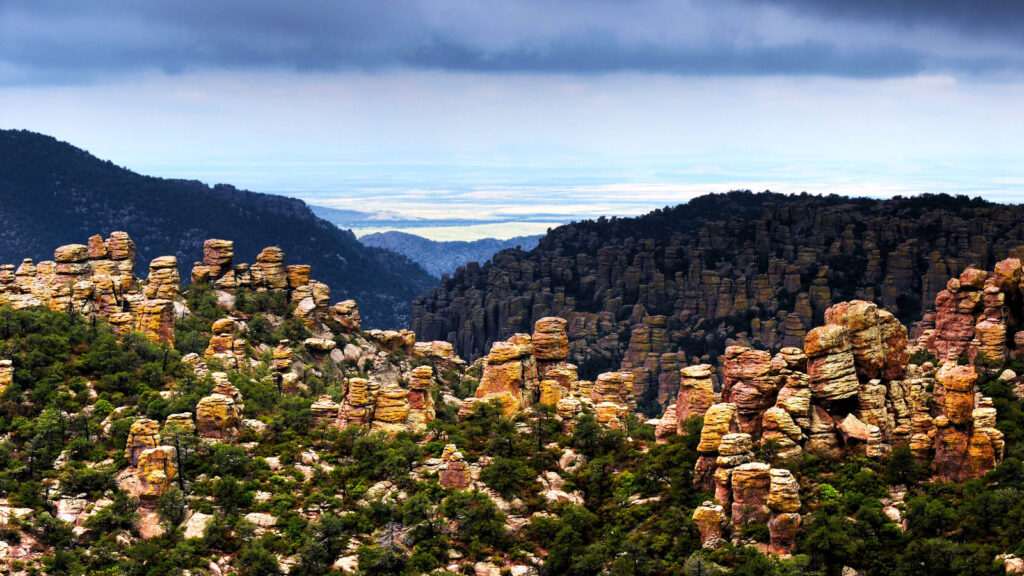
Chiricahua National Monument
Chiricahua National Monument is recognized by its whimsical rock gardens with pinnacles that reach hundreds of feet skyward. This is the homeland of the Chiricahua Apache, who relied on the natural resources in the area as far back as the 1400s. The stories of chiefs Mangas Coloradas and Cochise as well as medicine-man-turned-warrior Geronimo reverberate throughout the canyons here. Deer, bears and mountain lions inhabit the area, and the annual sandhill crane migration is so impressive that it has its own festival in nearby Willcox.
The 8-mile Bonita Canyon Drive begins on the valley floor and rises into mountains where balanced rocks seem to defy gravity. The drive ends at Massai Point, the pinnacle of this amazing sky island with 360-degree views of the rock valleys below. Visitors can see the Dragoon Mountains off in the distance, where Cochise Stronghold created a remote refuge that many Apache bands used for protection during conflicts with U.S. Army forces.